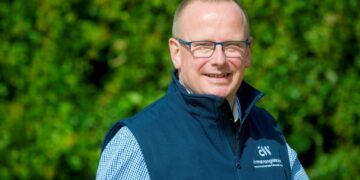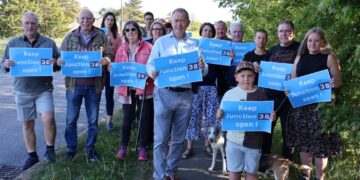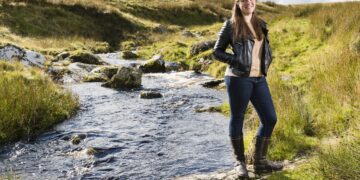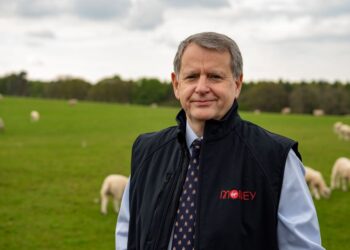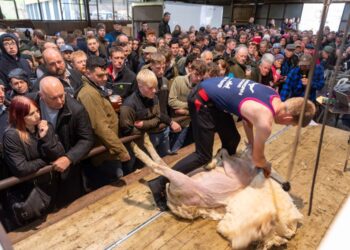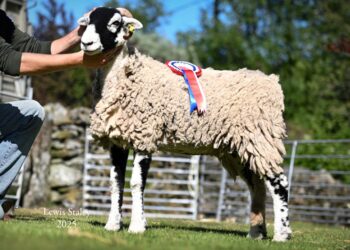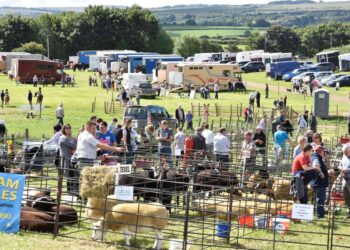
The weather is finally starting to warm up, and spring is on the horizon.
I love spring, it brings a promise of sunnier, happier days, with new life on the farm and lots of busy days ahead.
This yea, we are doing things a little differently on the farm.
Firstly, we are lambing a month earlier in March instead of April (for no other reason than fitting it around my other contract jobs), and secondly we are starting to bring in some data recording into our flock.
The latter I am very excited about, and this is something that I have been really keen to introduce into our farming system for some time.
I have a degree in animal behaviour and in all honesty, I’ve really missed the science and the data side of things, mostly because it actually provides hard evidence of what is happening right in front of you, and brings some sense and rational to what you are seeing and experiencing.
My theory is, I want to have as much knowledge about my flock as possible so I can make some good informed decisions going forward.
Don’t get me know, there is a lot to be said for ‘gut feeling’ in farming but I want to try and move past that and hopefully gain just a bit extra knowledge and hopefully productivity.
Right now we are running just short of 250 ewes, and my aim is to increase to 400 in the upcoming years.
I don’t want to get lost in the numbers game though. It’s vanity to be able to say that I have a 400 ‘strong’ flock, if in fact they are not actually fit and strong.
I don’t want to rush to increase my flock when there is so much I don’t know about them. As I increase the quantity, I want to make sure I not only maintain the quality of my flock but increase it.
I do know a lot from just my observations. Many of the ewes I have now are ones I have bred.
However, it struck me last year, as a triplet aborted her lambs only weeks before lambing, that my ability to track what was happening in my flock on a daily basis was really lacking.
We had paper records, but it was so hard to trace back what was happening at an individual sheep level and so making decisions on which ewes would stay for future breeding and which would go, was only ever semi-informed, and, if I am being honest, more of a gut reaction.
As I thought about my tups and ewes, as we approach tupping time, I had to acknowledge that I was missing too much information, that could potentially make a massive difference to what and how I was breeding. The more I thought about it, the more it became a no-brainer.
I had to have a way to understand and track my flock that would intelligently show me what was happening at an individual sheep level. I needed evidence to show me if my decisions where right and more importantly, that could help me make better decisions going forward.
So I took the plunge into the world of electronic stock recording. Since tupping time (October, 2020) I have been using a Shearwell Stock Recorder to record information on all my ewes.
So far I have recorded what ewes have gone to which tup, and how they then scanned through, what meds I have needed, vaccinations given, issues encountered eg foot health etc and movements.
In all honestly, so far the system has been a dream to work with and not half as daunting as I had originally thought it would be.
There is some initial work to get the flock set up, but being honest not anywhere need the work of keeping and then trying to track and make sense of paper records.
However, lambing time is what I am really excited for.
We’ll be using the software to record a number of key things; numbers of lambs born to each ewe (dead and alive), lambing ease (assisted or self delivered) , lamb vigour (how quick the lamb is up) and lamb weights at birth and then at interval stages eg eight weeks, 16 weeks.
As I do this, I can also link each lamb to the ewe and tup used to conceive them.
I’m focusing most of my data collection this year on lambing and growth rates of lambs.
We lamb outdoors, and we aim to finish all our lambs as quickly as possible on grass alone, as our lambs in the main are sold through my Red Shepherdess lamb boxes, so I am hoping the data will help me identify the ewes that rear strong lambs with good, solid growth rates and that thrive on the grass fed system.
I have no doubt that the data will provide some surprises and offer some challenging decisions.
I’m already preparing myself that I am likely to have some ewes in my flock that just aren’t suiting the grass based system we are working with.
The joy of having the data is that it will make the decision to move them on much easier.
It will take away the doubt, that has probably meant they have already stayed longer than they should have, and give me the evidence that my decision is right, not just for me but also for that ewe who may have been struggling to work with my farming system.
I am excited to see what data recording will bring for the years to come and see how data can improve the quality, productivity and general make up of my flock. I will share more about how I get on after lambing when we can start to monitor the growth of the lambs throughout the year.


